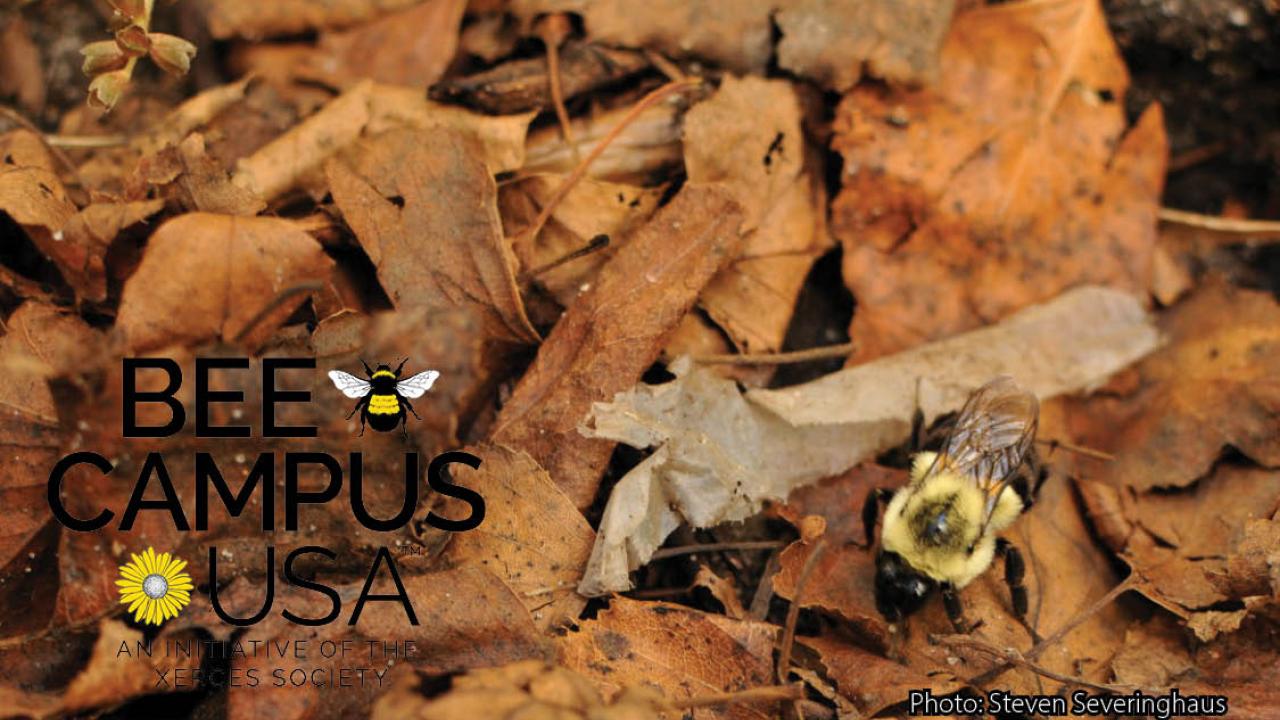
Leave the Leaves to Help Pollinators
It’s fall, the time of year when we enjoy the glorious colors and leaf blowers are revving up. But do we really need to remove every leaf from our gardens? From the pollinator perspective, the answer is “no.” A neat and tidy garden is what it looks like—barren and devoid of shelter for bumble bees, mason bees, and so many other pollinators.
This fall, as part of our affiliation with Bee Campus USA, the UC Davis Arboretum and Public Garden is encouraging residents to "leave the leaves,” a seasonal effort to provide habitat for beneficial insects, pollinators, and other invertebrates.
Provide habitat
Leaves and other decaying vegetation are an important part of the habitat that supports a diversity of wildlife. Overwintering bumble bee queens seek out leaf litter or soft soil to burrow into. Red-banded hairstreak butterflies lay their eggs on fallen oak leaves, which become the first food of the caterpillars. Not to mention so many other mini-beasts that live in or hunt through decaying vegetation—and of course, the robins, towhees, and sparrows that glean food on the ground.
Providing overwintering habitat is important, since many insect species across North America are experiencing declines, and some are at risk of extinction. Residential areas can provide essential habitat for our invertebrates. As a Bee Campus USA, we are joining other Bee Campus and Bee City affiliates across the country in this initiative.
Keep it neat
Protecting these creatures is as easy as doing less yard work in the fall, and leaving a layer of leaves an inch or two thick. This protects beneficial insects from predators and insulates them from the elements. But keeping leaves in your yard doesn’t have to be messy – you can rake leaves into piles and arrange them around trees or into garden beds. But be sure not to shred the leaves, as this could kill any insect eggs or larvae present. Beyond leaving the leaves, many insects use hollow stems as nesting sites, so keep these stalks until spring to provide habitat. In particular, “cavity nesting” bees, like mason bees, utilize these hollow stems!
Be mindful
Leaves are a great source of free mulch, but be mindful not to clog those storm drains and keep regularly used pathways clear! That's an issue we face here on campus where leaf removal is an important part of keeping our storm water systems running smoothly, as well as helping facilitate safe bicycle and pedestrian travel. Lastly, you also want to be sure that you don't smother smaller, herbaceous plants in your "leave the leaves" enthusiasm.
Leaving the leaves is just one way to help beneficial insects! These species will benefit even more from intentional habitat plantings in your yard. For that reason, be sure to check out our sustainable gardening toolkit for more ideas, including plant lists!
